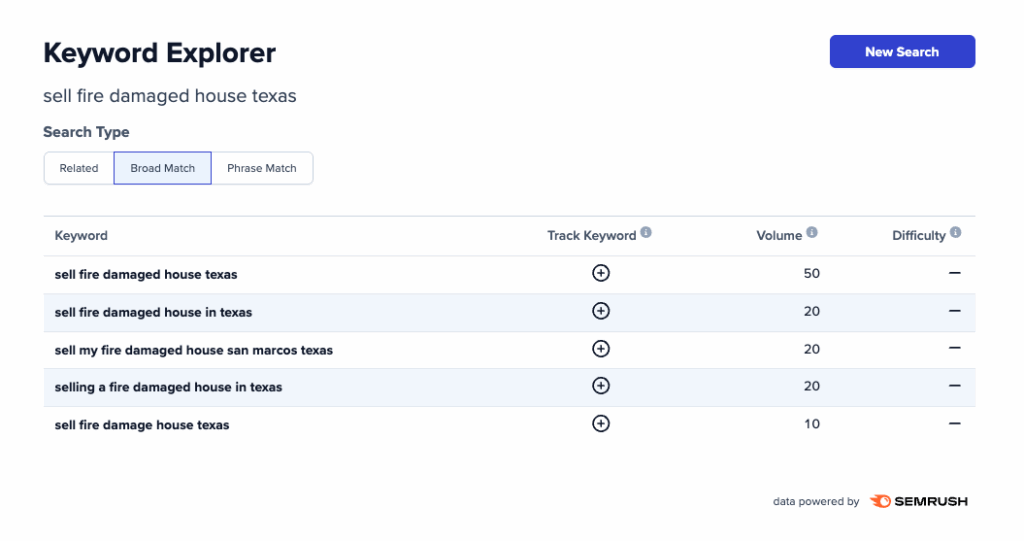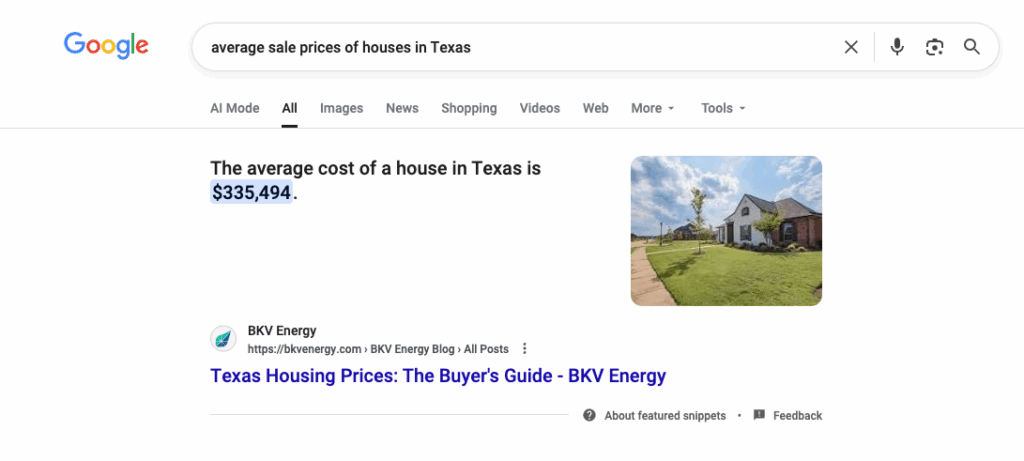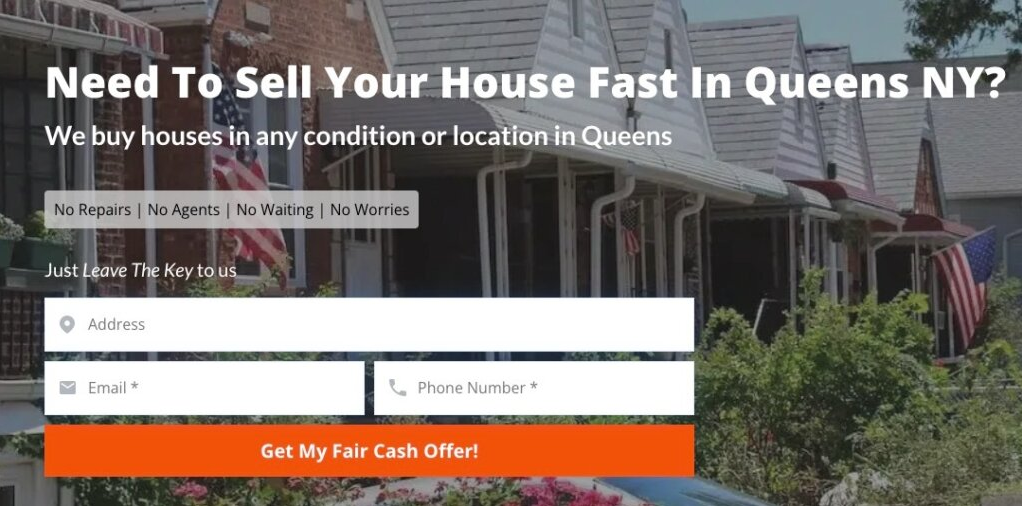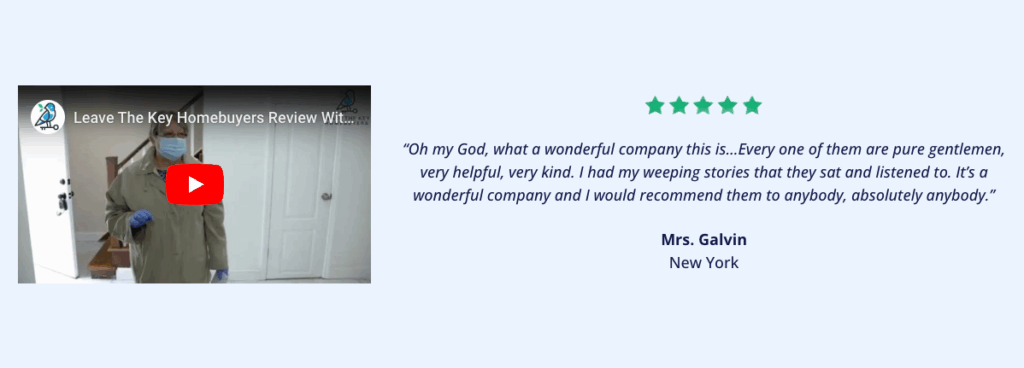SEO has a reputation for being hard to DIY. You’ve got checklists, keywords, content to write, and rankings to track — it can feel like a lot.
The good news is, you don’t need to master everything to see results!
A few focused actions can dramatically improve your rankings and help you attract more motivated seller leads. A great example is Mark St. Peter’s story, who did his own SEO and ranked #3 in competitive Arizona markets within just 6 months, generating leads daily.
Table of Contents
- Start with Keyword Research
- Publish Original, Information‑Rich Content
- Nail the Basics of Technical SEO
- Build Location‑Targeted Pages
- Fix Your Image Alt Text
- Use Internal Links the Right Way
- Conclusion
Key Takeaways
- Don’t dump all keywords into one page. Match them to the right page type (landing page, guide, blog, FAQ).
- When writing, add local proof: foreclosure stats, median prices, seller stories, neighborhood details.
- Check your site with Carrot’s Site Audit Tool to fix quick wins like duplicate content, missing meta tags, or broken links.
- Create city- or county-specific pages with local keywords in the URL (e.g. /sell-my-house-fast-roseburg).
- Add alt text to images that describes the property or city (e.g. “3-bedroom house in Eugene ready for cash sale”).
- Drop in internal links with keyword-rich anchor text (“sell your house fast in Portland”) instead of generic “learn more.”
Real quick before we dive in – why does SEO even matter?!
Because a tired landlord doesn’t flip through a phone book. Someone facing foreclosure isn’t waiting for postcards. Motivated sellers open their phone and type in exactly what’s on their mind: “stop foreclosure timeline in Oregon” or “sell my house fast in Roseburg.” Every one of those searches is a lead raising their hand.
Carrot websites are already built with SEO in mind, giving you a strong foundation out of the box. But if you want to maximize visibility in your market, the tips we’ll cover here will help you go from “just having a site” to actually generating consistent, high-quality leads from search.
1. Start with Keyword Research
Keyword research is really just trying to find the exact phrases motivated sellers, buyers, or landlords type when they’re hunting for help (“sell my house fast in Roseburg,” “probate house sale timeline,” “cash offer vs listing fees”). If you publish pages that match those real phrases (and actually answer the intent behind them), Google can put you in front of the right people.
If this is brand new to you, we walk through the process in the Real Estate SEO Bible, where you’ll see examples of the most profitable real estate keywords and how to apply them on your site.
Brainstorm your seed keywords.
Start with obvious ones like “sell my house fast,” “cash home buyers,” or “buy houses in .” or you can list 5–10 problems you solve: behind on payments, inherited a house, probate, code violations, divorce, tired landlord, need cash fast, “sell as-is,” These are your starting points.
You can also put in a competitor’s domain in Carrot’s Keyword Explorer to see what they’re ranking for.
Find related keywords
This is where things get easier. Carrot automatically shows you related keyword ideas, their monthly search volume, and how tough (Difficulty level) it’ll be to rank for them. The low-to-mid difficulty, high-intent phrases are the sweet spot for solo operators.

Choose your list of keywords to write on
Don’t try to create content on every topic, even if it’s easy to do that with AI tools now. Here’s a simple sniff test that helps you pick winners:
• Relevance: Would a person searching for this hire you if they liked what they read?
• Difficulty: Are the current results beatable with a stronger, more local, more useful page?
• Demand: Enough people search this to be worth an afternoon of writing—even if it’s dozens per month, not thousands.
Once you have that,
Decide what to do with them
Once you’ve gathered a list of keywords, the next step is deciding what to do with them. A common mistake is treating every keyword the same — cranking out the same type of blog posts for everything, or trying to stuff them all onto your homepage. That’s not how Google works, and it’s not how motivated sellers search.
Instead, match each keyword to the right kind of page.
Some keywords signal that someone is ready to act right now (“sell my house fast Roseburg”) — those belong on high-converting landing pages. Others show that the person is still researching (“stop foreclosure Oregon timeline”) — those are perfect for detailed guides or blog posts where you educate first, then invite them to reach out.
| Keyword idea | Intent | Page type | Notes |
| sell my house fast Roseburg | Transactional | City landing page | Primary headline + form; add local proof & neighborhoods |
| stop foreclosure Oregon timeline | Informational | Guide | Include step-by-step timeline + options + CTA to call |
| sell inherited house [county] | Informational → Transactional | County page or blog + CTA | Cover probate basics, taxes, and local court links |
| cash offer vs listing | Comparison | Blog/FAQ | Show math with local fees/days-on-market data |
Once you’ve created a handful of articles, add them to Carrot’s Keyword Rank Tracker so you can watch positions move as you publish. That feedback loop teaches you fast: which angles stick, which need more depth, and where an internal link or two will nudge you onto page one.
2. Publish Original, Information-Rich Content
Generic content is dying. With Google’s AI Overviews, searchers can get surface-level answers to broad queries without ever clicking a website. For example, a quick search for “average sale prices of houses in Texas” now produces an AI summary showing the median price ($335,494). That’s fast, neat, and complete enough that most people won’t bother scrolling further.

What wins clicks (and trust) is specific, original information people can’t get anywhere else: local numbers, real timelines, first-hand process details, and outcomes from deals you’ve actually closed
For example, instead of writing: “Foreclosure rates are high in our area.”
You can back up with details, data, or real-life examples. That’s what makes your post worth reading, linking to, and trusting: “According to Douglas County court filings, foreclosure starts rose 14% in the past year. That’s one of the highest jumps in Oregon, which means more families here are scrambling to find fast solutions.”
The first is just a claim. The second proves you know your market.
Tips to create good content
Here are a few practical ways investors can create content that gets read:
- Use local data. Add stats on median home prices, average days on market, foreclosure rates, or rental vacancy rates in your city or county. Even citing a recent Zillow or MLS report with your commentary makes the piece more valuable.
- Explain the “why” behind seller pain points. Don’t just say, “Selling through an agent takes too long.” Spell it out: the average listing in [your city] takes 63 days to close, plus repairs and showings can add weeks more.
- Show real stories. Share anonymized examples of sellers you’ve helped (“A retired couple in Springfield avoided foreclosure when we closed in 14 days”). These details connect emotionally and prove you’ve done it before.
- Offer your perspective. Add your take on what these numbers or situations mean for homeowners. For example: “Yes, prices are dropping, but that can actually make cash offers more attractive because buyers with financing are pulling back.”
Writing that kind of content from scratch every week takes hours you probably don’t have.
That’s where Carrot’s Automated Content Library comes in. Instead of starting with a blank page, you can pull from a collection of expertly written, real estate–focused blogs that are already 90% ready to publish.
All you have to do is add your personality, your market insights, or a quick local stat. And you’ll get content that stands out from the generic fluff AI is summarizing.
3. Nail the Basics of Technical SEO
Technical SEO sounds complicated, but it’s just about making sure your website is built in a way that search engines (like Google) can easily find, understand, and show it to people.
Some key parts of technical SEO are:
- Crawlable: Google’s robots should be able to move around your site and visit all your pages without getting blocked.
- Indexable: Once robots read the pages, Google should be able to save them in its “library” so they can show up in search results.
- Speed: Your site should load quickly, because slow sites make visitors (and Google) unhappy.
- Mobile-friendly: Your site should look and work properly on phones and tablets, not just computers.
- Clean URLs: Website links should be short and easy to read (like /about-us instead of /page?id=123).
- Security (HTTPS): It’s when your website shows a padlock 🔒 in the browser, meaning the connection is safe and private.
You don’t have to become a tech expert to get it right. Most investors just want their sites to rank and bring in motivated sellers, not spend hours digging through settings or trying to decode SEO jargon. That’s exactly where Carrot helps.
With the Carrot Site Audit Tool, you can see what’s holding your site back from ranking in search engines. It checks for common issues like broken links, duplicate content, missing alt text, or low word count, and it explains what each issue means in plain English.
Every audit comes with step-by-step guidance on how to resolve issues, plus Carrot Support if you get stuck. It’s the same level of insight SEO agencies charge thousands for—without the high price tag.
4. Build Location-Targeted Pages
When I searched for “sell my house fast in Queens,” I found one site with a generic landing page that says “Sell Your House Fast For Cash Today” but doesn’t mention any specific city.

Here’s another site with a Queens-specific page, headline, and all: “Need To Sell Your House Fast In Queens, NY?”

Which one do you think Google and sellers trust more?
The answer is obvious.
A local page that actually says “Queens” (or Brooklyn, or Roseburg, or wherever you invest) is more likely to rank for that search and more likely to convert the person who lands there. Because Google matches searchers with the page that seems most specific to their intent.
That’s why, instead of one statewide page, build individual pages for each city or county you invest in.
A strong location page isn’t just a block of text with the city swapped out.
URL of the page matters
One of the most important elements is the URL itself. Adding local keywords to your URLs is a direct ranking factor. Instead of using something generic like /services/oregon, create URLs such as:
- /sell-my-house-roseburg
- /we-buy-houses-eugene
This signals to Google exactly what the page is about and ties it directly to local keywords sellers are typing in. Pair that with a strong title tag like “Sell Your House Fast in Roseburg | Trusted Local Buyers” and you’ve got a page built to rank.
From there, make the page feel genuinely local.
Tips to create location-targeted pages
- Add local details such as photos of houses in that area, maps of your service region, or even a testimonial from a seller in that market. These cues reassure people that you’re not some out-of-town buyer.
For example, the page I found earlier (a Carrot site ranking #1 for “sell my house fast queens) has a local proof—a testimonial video from a New York homeowner who sold to that company.
That’s exactly the type of content Google wants to see!

- Phrases like “We can meet you anywhere in Eugene within 24 hours” or “We close deals in Medford faster than the typical market average” show you’re truly active on the ground.
- If you sponsor local events, volunteer, or are part of a chamber of commerce, mention it. Sellers want to work with locals, not faceless companies.
And if you’d rather have the heavy lifting done for you, Carrot’s Investor Concierge Setup Service is built for exactly that. Our team rewrites your content, personalizes your branding, and localizes your site with credibility signals and SEO tweaks that help you show up (and convert) faster. Instead of wrestling with endless checklists, you’ll have a high-performing site up and running in about 30 days, along with a clear strategy for what to do next.
5. Fix Your Image Alt Text
Alt text (short for alternative text) is a short description you add to each image on your site. It helps Google understand what the image is about and how it relates to the page. Even if sellers don’t always search in “Images,” Google still considers those signals when ranking your page in regular search. It’s the simplest way to get optimized for on-page SEO.
For example, instead of leaving the alt text blank or using the default name of the image (img_123.png) you can write “3-bedroom property in Phoenix” or “sell my house fast Tucson cash offer.”
How to write a good alt text for your image
Here are some simple ways to write an alt text that helps you rank in search engines:
- Be specific: describe what’s actually in the photo, e.g., “2-story rental home in Dallas with brick exterior.”
- Keep it short: A few words or a short phrase is usually enough.
- Skip “image of” or “picture of”: Screen readers or search engines already know it’s an image.
- Leave decorative images blank: If the image doesn’t add value (like a divider or background), use an empty alt tag instead.
Website builders, like Carrot, make it easy to add or edit alt text without touching code. Just upload your image, look for the “Alt Text” field, and type in your description.
Start with your motivated seller page, your cash buyer page, and any blog posts that already bring traffic. Those are the ones most likely to bring in leads.
6. Use Internal Links the Right Way
Internal links are simply links that connect one page of your website to another. They help visitors move around your site, but they’re also important for search engines.
Google uses them to pass PageRank (authority) from one page to another. If you link often to your motivated seller page, you’re telling Google it’s one of the most important pages on your site. That way it can show that page to visitors for relevant search queries.
In the Hubspot study illustrated below, they showed an average higher ranking in search engines based on the number of internal links in their content.

But the one mistake people often make is not choosing the right anchor text for their internal links.
Anchor text is the clickable part of a link, and it gives Google context about the page you’re sending people to.
Here’s a quick comparison:
- ❌ Bad: Learn More
- ✅ Good: Sell your house fast in Portland
The first tells you nothing. The second clearly signals what the page is about and includes a local keyword.
When you’re writing a blog post or adding content, look for natural places to link back to those pages with descriptive anchor text.
For example, if you’re writing an article about foreclosure timelines, you could add a link that says “options to sell your house in foreclosure in Dallas” and point it to your Dallas foreclosure page.
Another key is balance.
You don’t want to cram five links into every paragraph. Instead, place links where they make sense for the reader. One or two strong, descriptive links per section of content is enough.
Wrapping It Up
You don’t need a huge team or endless hours to see results from SEO. By focusing on the basics:
- Optimizing images with alt text
- Building smart internal links
- Tightening up your technical SEO
- Publishing location-focused pages, and
- Creating original content
…you can steadily move the needle.
These steps compound over time, and even solo investors can build a site that ranks, attracts motivated sellers, and generates consistent leads.
👉 Start your Carrot site today and get SEO tools built specifically for real estate investors.
👉 Prefer to DIY? Check out our SEO guide for step-by-step help on boosting results from SEO.
👉 Looking for a trusted SEO vendor, specific to real estate investing? Check out our recommendations in the Carrot Marketplace!
You might also like: https://carrot.com/blog/link-building-for-real-estate/
FAQs
1. Do I really need SEO if I already get leads from postcards, cold calling, or referrals?
Yes. Offline marketing still works, but SEO captures the sellers who are actively searching for solutions online right now. When someone types “sell my house fast in [your city],” they’re raising their hand and looking for exactly what you offer. That’s why SEO is such a powerful and consistent lead source.
2. How long does it take to see results from real estate SEO?
SEO isn’t instant like paid ads—it typically takes 3–6 months to see measurable movement in rankings. However, because real estate searches are highly local, you can sometimes rank faster with well-optimized city or county landing pages. The key is consistency: publish relevant content, optimize your site, and track your progress.
3. What’s the difference between keywords for landing pages and blog posts?
Great question. Transactional keywords (like “sell my house fast ”) should go on high-converting landing pages, because the searcher is ready to act. Informational keywords (like “foreclosure timeline in Oregon”) work better as blog posts or guides, where you educate first, then invite them to reach out. Matching keyword intent to the right page type is one of the biggest SEO wins.
4. Can I do real estate SEO myself, or do I need to hire an agency?
You absolutely can do it yourself. With tools like Carrot’s Keyword Explorer, Rank Tracker, and Site Audit, most investors can cover the basics without hiring an expensive agency. If you can spare a few hours each month to optimize pages, write local content, and build links between your posts, you’ll see results without the overhead.
5. How do I know which keywords are worth targeting?
Start with a simple framework:
- Relevance – Would someone searching this phrase likely hire you?
- Difficulty – Can you realistically outrank the current top results with a better, more local page?
- Demand – Even if it’s just dozens of searches per month, is it worth your time?
Using this sniff test helps you prioritize keywords that drive leads instead of wasting time chasing high-volume terms that don’t convert.
